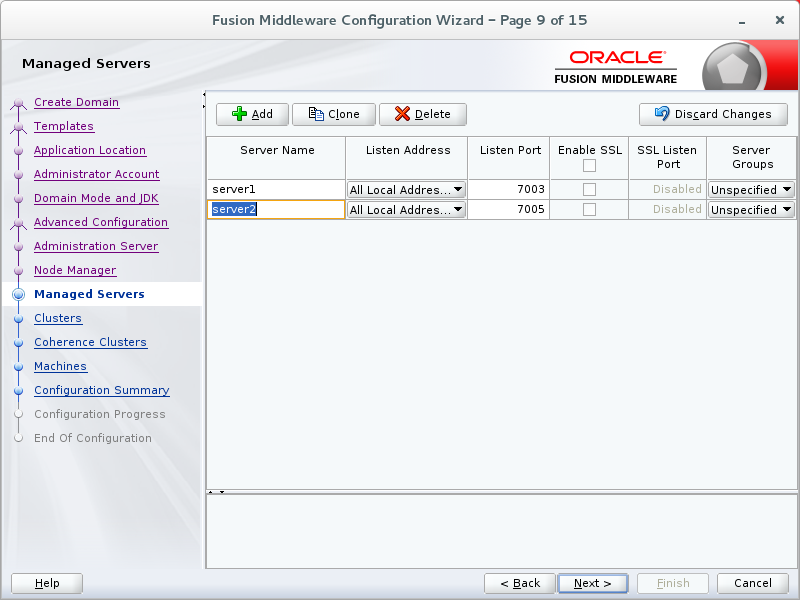

It is referred to as operational configuration in the Oracle Coherence documentation. The tangosol-coherence-override.xml file is a global per-server configuration file. The groups entry for myServer2 and myServer3, put them in the strategy group.įor Oracle Coherence cluster configuration, Oracle Event Processing uses the Oracle Coherence tangosol-coherence-override.xml configuration file. The groups entry for myServer1 puts it in the selector group. The following examples show the relevant snippets from the config.xml file for myServer1, myServer2, and myServer3. For more information about the domain and singleton groups, see Server Groups. If a server configuration does not have a groups element, then the server is a member of the default server groups (domain and singleton). Separate multiple server group names with commas.

The groups element can include more than one server group name in a case where the server is a member of more than one server group. When you add cluster element child elements, observe the correct element order as Order of Cluster Element Child Elements describes.

The server-name element must be different for each server in the multiserver domain. The element true is required if you want to enable Oracle Coherence.įor each server of the multiserver domain, the multicast-address elements must contain the same value. With Oracle Coherence, you can specify a unicast address here and Oracle Coherence will use WKA (Well Known Addressing).Įnabled: By default the clustering of the servers in a multiserver domain is disabled for Oracle Coherence.

All the Oracle Event Processing servers using this multicast-address must be on the same subnet. This is the basis for the auto-assigned multicast address. Oracle recommends that you use an address of the form .X. If the servers are hosted on different computers, then you must provide an appropriate domain-local address. Multicast-address: The multicast-address element is required unless all servers of the multiserver domain are hosted on the same computer in that case you can omit the multicast-address element and Oracle Event Processing automatically assigns a multicast address to the multiserver domain based on the computer's IP address. It is also mandatory if a server is deployed on a host machine that has multiple IP addresses configured (whether in a multiserver or standalone-server environment). This element is mandatory if one or more Oracle Event Processing servers in your multiserver domain are on different hosts and you plan to manage the multiserver domain using Oracle Event Processing Visualizer. Server-host-name: Specifies the host address/IP used for point-to-point HTTP multiserver communication. The default is the Oracle Coherence member name if that is set or WLEvServer- MEMBERID. Oracle Event Processing Visualizer uses the value of this element when it displays the server in its console. Server-name: The server-name child element of cluster specifies a unique name for the server. You can use the following child elements of cluster:


 0 kommentar(er)
0 kommentar(er)
